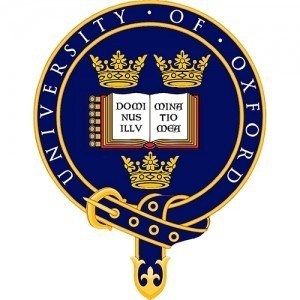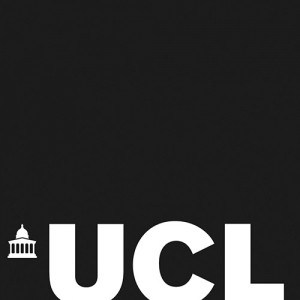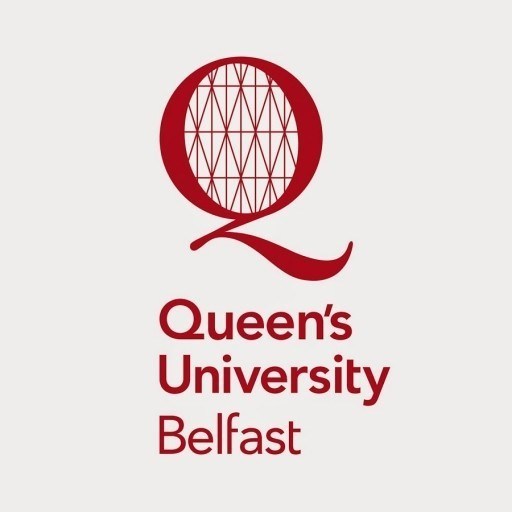Photos of university / #oxford_uni
Program Overview:
The MSc in Applied Landscape Archaeology at the University of Oxford offers a unique interdisciplinary approach to the study and practical application of landscape archaeology. This programme is designed for students who are interested in understanding the historical and cultural significance of landscapes through innovative archaeological methods. Students will engage with both theoretical frameworks and hands-on fieldwork, gaining critical skills in landscape analysis, archaeological surveying, remote sensing, GIS (Geographic Information Systems), and digital visualization techniques. The programme emphasizes the integration of archaeological data within broader environmental and social contexts, fostering a comprehensive understanding of how landscapes have shaped human history and vice versa.
Throughout the course, students will benefit from the expertise of leading archaeologists and specialists in the field, participating in supervised research projects and excavation campaigns. The curriculum combines core modules covering archaeological theory, landscape interpretation, and research methods with optional modules that allow students to tailor their studies according to their interests, including environmental archaeology, artifact analysis, and heritage management. Practical components include field exercises, laboratory work, and the use of advanced technological tools to analyze archaeological sites and landscape features.
The programme is suitable for recent graduates wishing to pursue careers in archaeology, heritage consultancy, research, or further academic study. Additionally, it provides vital skills for practitioners engaged in cultural resource management or environmental planning. Graduates will have developed a robust portfolio of technical skills, analytical abilities, and contextual knowledge that enable them to contribute meaningfully to the understanding and preservation of landscapes of archaeological importance.
By combining rigorous academic training with applied fieldwork, the MSc in Applied Landscape Archaeology prepares students to become confident, versatile professionals equipped to address contemporary challenges in archaeology and heritage conservation. The programme also encourages international perspectives, enabling students from diverse backgrounds to exchange knowledge and collaborate on global archaeological issues. Upon completion, graduates are well-positioned to pursue further research, advanced professional roles, or engage in multidisciplinary projects aimed at safeguarding cultural landscapes for future generations.
The course is divided into two one-year modules, Year A and Year B, which are run in alternate academic years (from October to September):
Year B begins in October 2017
Year A begins in October 2018
All students attend both modules, but they may be done in any order depending on year of admission. Because the course is modular there is no advantage to one combination over the other. Students normally study two consecutive modules and this is regarded as the best way to experience the course. However, in exceptional cases, regulations permit a student to intermit between modules (by permission of the Board of Studies only).
Both one-year modules have one core paper and two advanced papers spread over three terms.
Year A:
- Core Paper: Method and Theory in Landscape Archaeology
- Advanced Paper (Artefacts and Ecofacts in the Landscape)
- Advanced Paper (Archaeological Prospection)
Year B:
- Core Paper: Managing Historic Landscapes in the 21st Century
- Advanced Paper (Digital Landscapes)
- Advanced Paper (Reading the Historic Landscape)
- Field Training Week
Instead of one advanced paper, students may choose to opt for a ‘flexi-placement’ comprising at least 14 days spread over approximately one year to be spent working at an organisation which is involved in an aspect of landscape archaeology. The Course Director will supply details of these.
The dissertation (15,000 words) is the student’s own project which develops throughout the course and is submitted at the end of the second module. It can be based on a piece of fieldwork, or a methodological or artefactual study. Each student will be assigned a tutor who will supervise their dissertation. A dissertation workshop is held each year to help students work together on this essential course element.
In addition, once every two years (in late June - early July of Year B) a compulsory field survey training week will take place. Each student will also have a series of tutorials with the course director and tutors; these may take place in person or on-line.
Course content and timetable
All assignment titles, submission deadlines, reading lists, field visit and field work locations will be supplied when you have taken up your place. The course is based at Rewley House, 1 Wellington Square, Oxford OX1 2JA. Some classes may take place at Ewert House, Ewert Place, Oxford (the Department’s teaching annexe off Banbury Rd, Summertown, North Oxford).
YEAR B COURSE OUTLINE, 2017-2018
Matriculation Ceremony Saturday 14 October 2017,
Compulsory for new students; followed by college welcome and lunch. Your college will inform you of other dates in the college. Location: your college
Course Induction (new students only): Sunday 15 October 2017, 10.00am - 3.00pm
One day including orientation session and short field visit within Oxford. Location: Rewley House.
Teaching Sessions
TERM 1
- Core Paper (2 x 2,500 word assignments)
- METHOD AND THEORY IN LANDSCAPE ARCHAEOLOGY
- Analysis of conceptual frameworks and research designs in landscape archaeology covering multi-period perspectives
- Four Saturdays: 28 October, 11 November, 25 November, 9 December 2017
TERM 2
- Dissertation Workshop (all students) 13 January 2018
- Advanced Paper (1 x 5,000 word assignment)
- ARTEFACTS AND ECOFACTS IN THE LANDSCAPE
- Studying palaeoenvironmental evidence and techniques; also surface scatters based on ceramics and lithics: depositional and preservational factors, one practical fieldwalking day.
- Four Saturdays: 27 January, 17 February, 3 March, 17 March 2018
TERM 3
- Advanced Paper (1 x 5,000 word assignment)
- ARCHAEOLOGICAL PROSPECTION
- Principles and applications of archaeological geophysics in landscape survey; other techniques such as Lidar interpretation. Two Saturdays and one full weekend: 5 May, 19 May, 23 June, 6 July 2018
Field Survey Training Week
Seven days (Sat-Fri) 2-8 June 2018
YEAR B COURSE OUTLINE, 2018-2019
Induction: TBC
Teaching Sessions
TERM 1
- Core Paper (2 x 2,500 word assignment)
- MANAGING THE HISTORIC LANDSCAPES IN THE 21st CENTURY
- Issues and approaches to landscape management in the present day: one field visit.
- Four Saturdays: Dates TBC
TERM 2
- Dissertation Workshop (all students) - one Saturday: TBC
- Advanced Paper (1 x 5,000 word assignment)
- DIGITAL LANDSCAPES Digital mapping, analysis and GIS, supported practical teaching and exercises.
- Four Saturdays: Dates TBC
TERM 3
- Advanced Paper (1 x 5,000 word assignment)
- READING THE HISTORIC LANDSCAPE
- Historic landscape archaeology; two field visits
- Four Saturdays: Dates TBC
Field Survey Training Week (1 week, full-time, runs Saturday-Friday): Dates TBC likely to be May or June. COURSE ELEMENTS APPLICABLE TO BOTH YEARS
Optional Flexi-Placements
Minimum 14 days within a period of not more than one year in terms 2 - 6 (by mutual arrangement of student and placement tutor). Students will be given real work within the organisations, and their placement project portfolios will be supervised by the placement tutors.
Placements must be focused on a specific piece of original or semi-original research or development work within the programme of the placement organisation, eg a digital archive; a finds report; an analysis of a geophysical plot; a fieldwork report, to be presented as a practical portfolio. Text word limit: 5,000 words, equivalent to one Advanced Paper.
15,000 word dissertation
A dissertation must be a piece of independent research, and may involve fieldwork.
Assessment methods
This course is 100% continuous assessment: there are no written exami- nations. Each core paper consists of two 2,500 word assignments, each advanced paper consists of one 5,000 word assignment (or in the case of a placement, an equivalent-sized placement report); the field training week logbook and the 15,000 word dissertation complete the written requirements. At the end of the course, students attend a viva voce (oral) examination.
The total marks over the two-year programme are awarded as follows:
Core Papers 20% (10% each year)
Advanced Papers 40% (20% each year)
Field Week Logbook 5%
Dissertation 35%
IT requirements
This course uses the Department’s online assignment submission system. In order to prepare and submit your course assignments you will need access to the Internet and a computer meeting our recommended minimum computer specification. Students of this course may use the student computing facilities provided in Departmental buildings.
Applicants are normally expected to be predicted or have achieved a first-class or strong upper second-class undergraduate degree with honours or FHEQ Level 6 Advanced Diploma (or equivalent international qualifications), as a minimum, in archaeology or a related subject. If you are unsure as to whether your qualification is in a related subject, please contact the Programme Director.
For applicants with a degree from the USA, the minimum GPA sought is 3.6 out of 4.0.
A BA/BSc degree (in combined honours) or PGCert in a relevant subject may be acceptable.
If you hold non-UK qualifications and wish to check how your qualifications match these requirements, you can contact the National Recognition Information Centre for the United Kingdom (UK NARIC).
Extensive field and/or professional experience in archaeology is also relevant and may be taken into account as a factor in admission. Qualifications and experience in a related area of historical, landscape and/or environmental relevance will also be considered. You would normally be expected to have some practical archaeological experience, such as excavation, survey or data processing
No Graduate Record Examination (GRE) or GMAT scores are sought.
- Official transcript(s)
- CV/résumé
- Research proposal:One to two pages
- Written work: Two essays of 2,000 words each
- References/letters of recommendation: Three overall, all of which must be academic
ENGLISH LANGUAGE REQUIREMENTS
Higher level
|
est |
Standard level scores |
Higher level scores |
||
|
IELTS Academic |
7.0 | Minimum 6.5 per component | 7.5 | Minimum 7.0 per component |
|
TOEFL iBT |
100 |
Minimum component scores:
|
110 |
Minimum component scores:
|
| Cambridge Certificate of Proficiency in English (CPE) | 185 |
Minimum 176 per component |
191 |
Minimum 185 per component |
| Cambridge Certificate of Advanced English (CAE) | 185 |
Minimum 176 per component |
191 |
Minimum 185 per component |
Funding for the University of Oxford's Applied Landscape Archaeology programme is available through a variety of channels, primarily aimed at supporting both domestic and international students. The university offers a range of scholarships, bursaries, and financial aid options tailored to graduate students pursuing this specialised field of study. These funding opportunities are often competitive and require applicants to meet specific academic and financial criteria.
Prospective students are encouraged to explore scholarships provided directly by the University of Oxford, such as the Clarendon Fund, which offers substantial funding packages to outstanding students regardless of nationality. Additionally, departmental scholarships and research awards are available for students enrolled in the Department of Archaeology, which may include funding specifically designated for applied landscape archaeology projects. External funding sources also play a significant role, with students able to apply for grants from archaeological and heritage organizations, government agencies, and cultural preservation foundations.
Financial support can cover tuition fees, living expenses, research costs, and fieldwork expenses associated with the programme. It is important for applicants to check the specific eligibility requirements, application deadlines, and funding amount details from the official Oxford University scholarships and funding webpages. Many funding options require separate applications or nominations, and some are awarded on a competitive basis, considering academic merit and research proposal quality.
In addition, students may consider external scholarships offered by their home governments or international organizations, which aim to promote cultural heritage and archaeological research collaboration. Many students also fund their studies through tuition fee loans, personal savings, or sponsorship from employers or professional bodies.
The university provides comprehensive guidance and support to applicants seeking funding, including detailed instructions on application procedures, deadlines, and required documentation. Engaging with faculty and department administrators early in the application process is recommended to identify all possible sources of financial aid. Overall, while funding opportunities are available, prospective students should plan their finances carefully and explore all available options to support their studies in applied landscape archaeology at Oxford.
Applied Landscape Archaeology at the University of Oxford offers a comprehensive interdisciplinary approach to understanding human interactions with the landscape through time. This programme combines archaeological theory and practical skills with insights from ecology, geography, and environmental sciences to study the formation, evolution, and cultural significance of landscapes. Students engage in fieldwork, laboratory analysis, and digital methods such as Geographic Information Systems (GIS) and remote sensing to investigate site surveys, landscape reconstructions, and regional planning. The course is designed for those interested in heritage management, archaeological research, and conservation, providing a robust grounding in both theoretical frameworks and practical techniques. Participants have the opportunity to work on archaeological projects in various landscape settings across the UK and beyond, applying multidisciplinary methods to solve real-world problems related to landscape use, abandonment, and transformation over centuries. The programme is delivered through a combination of lectures, seminars, workshops, and supervised fieldwork, enabled by access to Oxford’s extensive research facilities and collections. Students are encouraged to develop critical analytical skills and an awareness of current debates in landscape archaeology, heritage preservation, and environmental change. Graduates of the programme are well-prepared for careers in academic research, cultural resource management, heritage consultancy, environmental planning, and related fields. The faculty includes leading academics and practitioners with extensive experience in archaeological survey, environmental archaeology, and landscape analysis, ensuring an up-to-date and practically relevant curriculum. Collaborations with museums, archaeological trusts, and conservation agencies provide immersive professional experiences. This programme is ideal for those seeking to combine scientific investigation with cultural understanding, fostering a nuanced appreciation of how landscapes shape human history and vice versa.


